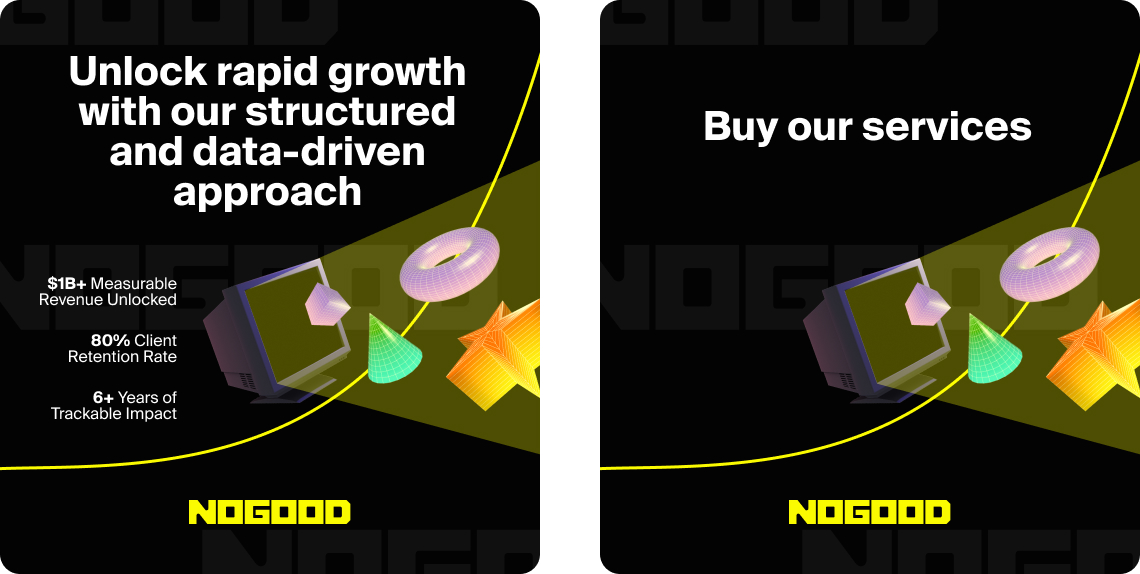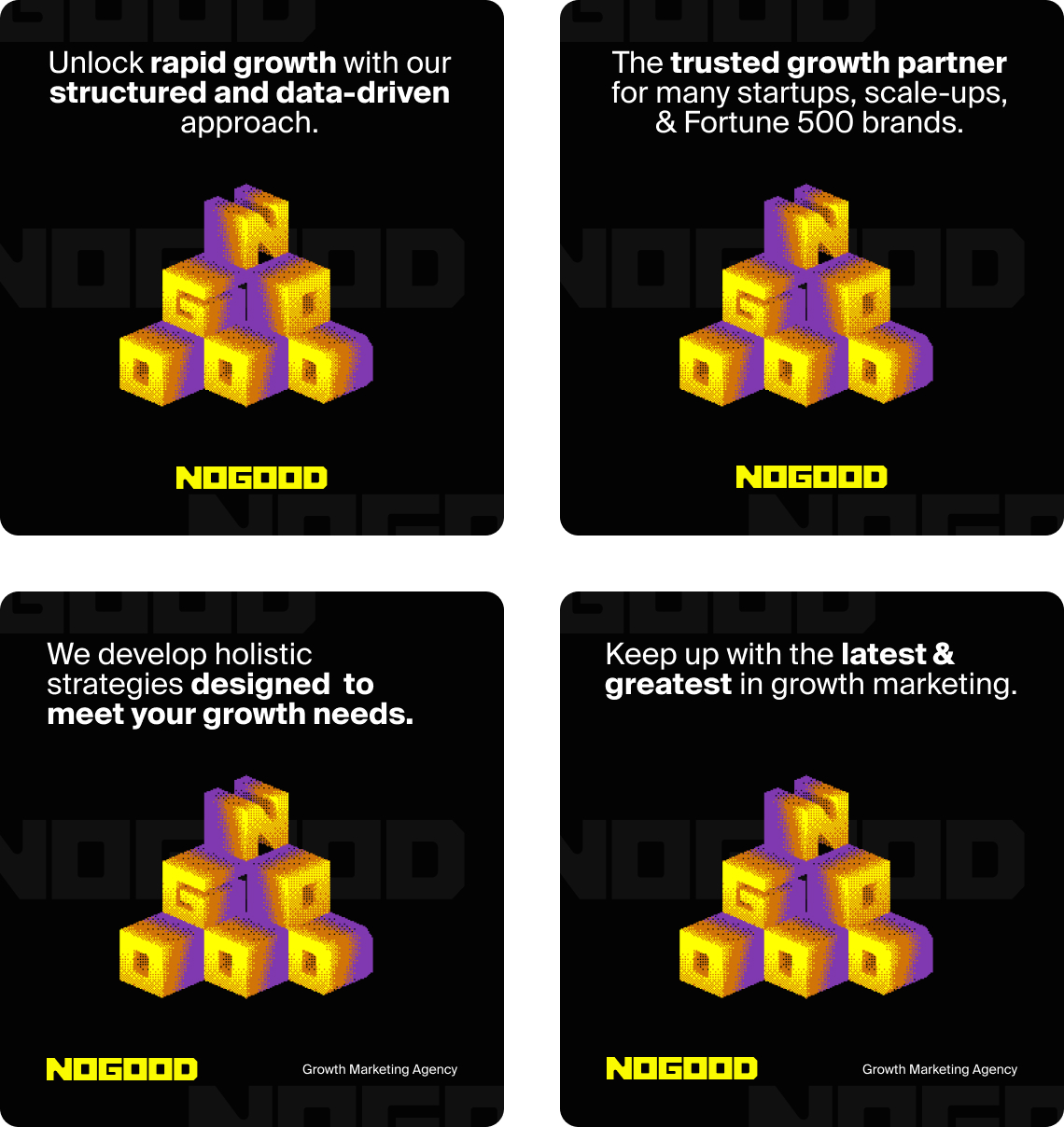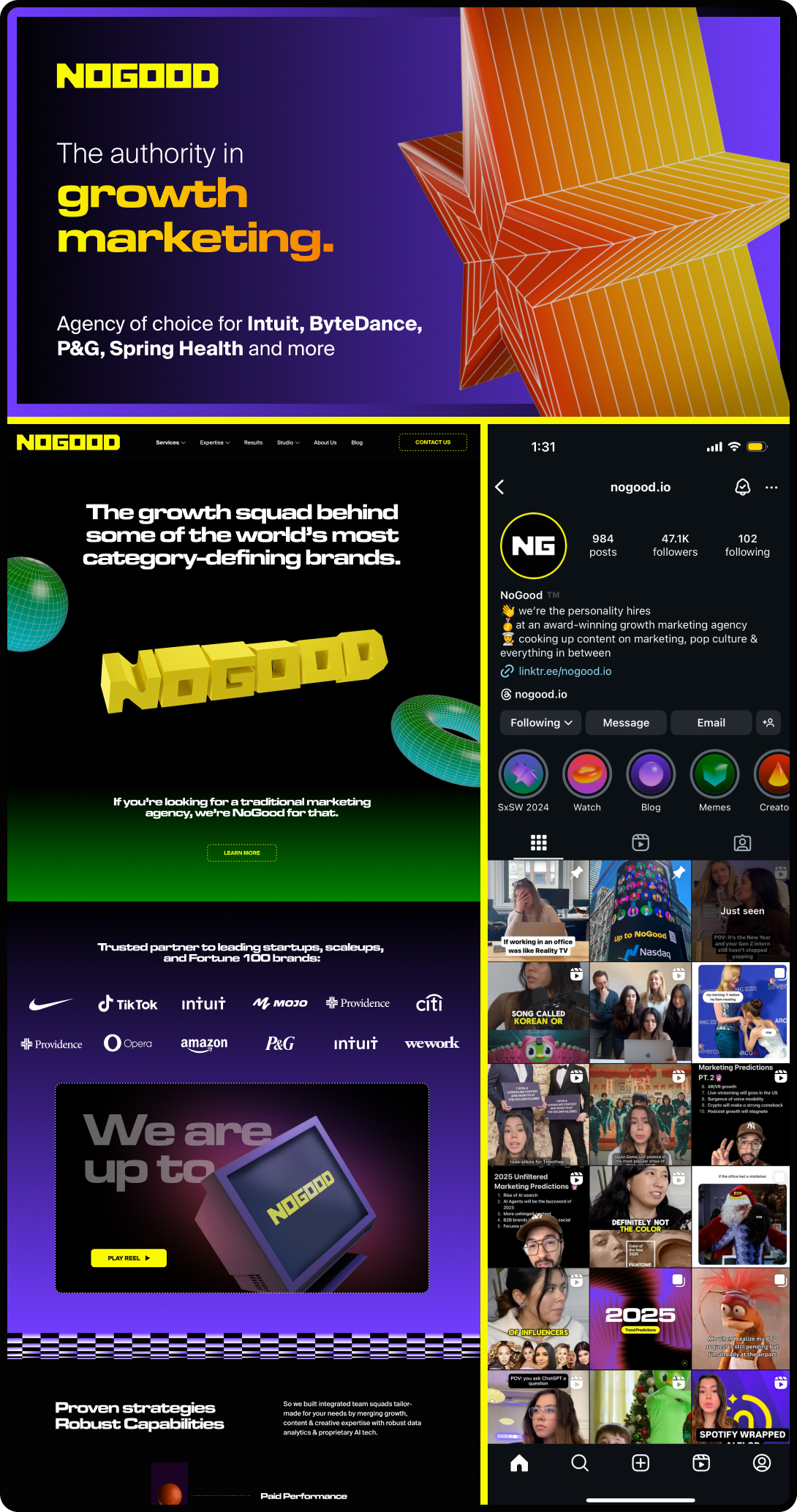Have you ever been scrolling on Instagram and come across an ad that just made you think oof, what was this brand thinking, this looks awful…? Don’t be that brand; you can do better.
Before getting into specific tips and best practices for Meta, let’s align on two basics:
Foundations of Building Your Meta Creative
Start with a Clear Goal
Every successful ad campaign begins with a clear and measurable objective. Suppose the purpose of your campaign is to collect leads, but you’ve set up the conversion objective as sales and are looking at a metric like revenue for success. Chances are you’re going to waste time and money. Selecting the right objective ensures that your campaign aligns with your business goals and leverages Meta’s algorithm correctly to better optimize for desired outcomes.
Tip: Pair your campaign goals with key performance indicators (KPIs) to track progress. For example, if your goal is lead generation, monitor cost per lead (CPL) and conversion rates.
Know Your Audience
Understanding your target audience is essential for creating impactful ads. In the past, this often meant using detailed audience targeting to reach customers who matched your demographic. Nowadays, audience targeting is less effective, placing much more emphasis on creatives to connect with the right people.
What tone resonates best with your audience — funny, informal, or serious? And what visuals catch their eye — modern and sleek or funky and colorful? Whatever your brand identity, ensure it aligns cohesively with your target demographic. Use these insights to craft ads that truly resonate with your potential customers.
Once you’ve established clear goals and have a deep understanding of your audience, it’s time to focus on the fun part of your campaign: the creatives.
5 Best Practices for Winning Creative on Meta
1. Eye-Catching Visuals
The battle for attention is fierce. Your ad creative must capture interest within the first three seconds. Here are the most important things to keep in mind:
- Use High-Quality Visuals – Choose professional-quality visuals or design elements that capture your brand’s unique style.
- Incorporate Movement – Videos and animations tend to perform well on Meta. Keep videos short and deliver the key message within the first few seconds.
- Maintain Consistency – Ensure your ads match your overall brand aesthetic and messaging.
- Test Formats: Try static images, carousels, and videos to see what performs best with your audience.

2. Don’t Overlook Your In-Graphic Copy
While visuals will catch a user’s attention, ad copy drives action. Focus on creating concise, compelling messages that resonate with your audience.
- Hook with the First Line: Start with a question, bold statement, or benefit to grab attention.
- Highlight Benefits: Focus on how your product or service solves problems or adds value.
- Strong CTAs: Use action-oriented language like “Shop Now,” “Learn More,” or “Sign Up.”
- Match Tone to Audience: Use language that reflects your brand voice and speaks directly to your target audience.

3. Use the Correct Dimensions for All Placements
Meta lets you choose where your ads will appear, such as feeds, stories, and more. If you opt for multiple placements, ensure your creative fits the correct dimensions for each one. Nothing screams rookie more than an ad on Instagram stories that is awkwardly cropped because you didn’t upload a 9:16 version. Trust me, just do it, it’s worth the effort.
4. Test & Optimize Continuously
Optimization is key to improving campaign performance over time. A/B testing allows you to compare variations of your ads to determine what resonates most with your audience.
- Test Creatives: Experiment with various images, videos, headlines, and CTAs. However, for the best results, test only one or two variables at a time. If you’re testing too many elements at once, how will you know which part of your creative made it successful? A big part of the game is learning to leverage the data you have—be strategic about it.
- Iterate: Use insights from testing to refine your ads and maximize ROI.

5. Stay Aligned Across Touch Points
Consistency is very important for building trust and reducing friction. Make sure your ads, organic social media presence, and website offer a cohesive experience for potential customers.
- Match Ad and Landing Page: Align visuals and messaging to avoid confusion.
- Consistent Branding: Use the same (or at least similar) color schemes, fonts, and tone across all platforms.
- Seamless User Journey: Ensure users can easily navigate from ad to purchase (or lead, or whatever your goal is) without unnecessary steps.

Additional Nitty-Gritty Tips
1. Remove the Multi-Advertiser Option
What Meta says about it: “Your ads can appear alongside other ads in the same ad unit to help people discover products and services from businesses that are personalized to them. Your ad creative may be resized or cropped to fit the ad unit.”
The reality: Why would you want to pay for your ad to be smooshed against competitors? Stand out. Make the most of your ad spend.
2. Keep Your Headline Short and Concise
Use this space strategically to highlight a strong CTA or convey a key message. Want more subscribers? Try something like, ‘Join the largest network of XYZ today!’ Or drive purchases with, ‘Get 25% off your next order!'”
3. Advantage+ Enhancements
For a comprehensive list of do’s and don’ts, read the AI section of our blog on paid social predictions for 2025.
If you’re advertising for an e-commerce brand, take advantage of the available real estate and test catalog ads. In addition to your creative, this approach allows you to showcase various SKUs.
Tip: Organize your catalog by grouping product categories cohesively. For example, if you’re advertising a clothing brand, create separate sets for sweaters, pants, and dresses. Then, align these sets with the specific creative you plan to publish.
4. Make Sure Your URL Aligns with What You’re Advertising
Let’s face it, nothing is more frustrating than seeing an ad, thinking, “Wow, that looks cool,” only to click on it and end up on a page that’s completely unrelated to what caught your interest in the first place. Pay attention to this detail — it’s easy, and it makes all the difference!
5. URL Parameters
Ensure you’re tracking conversions beyond just the Meta platform. By adding a UTM to your creative, you can more accurately identify where conversions are coming from and properly attribute them to your various campaigns and creatives. I recommend using dynamic URL parameters that pull data from different sections, such as campaign name, ad set, and creative ID.
Now You’re Ready to Start Testing Your Ads on Meta
Creating effective Meta ads requires a balance of clear objectives, audience understanding, and compelling creatives. By focusing on quality visuals, concise copy, proper ad dimensions, and ongoing testing, you can optimize your campaigns for success. Don’t overlook the finer details, like ensuring your URLs align with your messaging and maintaining consistency across touch points. When done right, these best practices will help you make the most of your media budget and connect with your audience in an impactful way.





